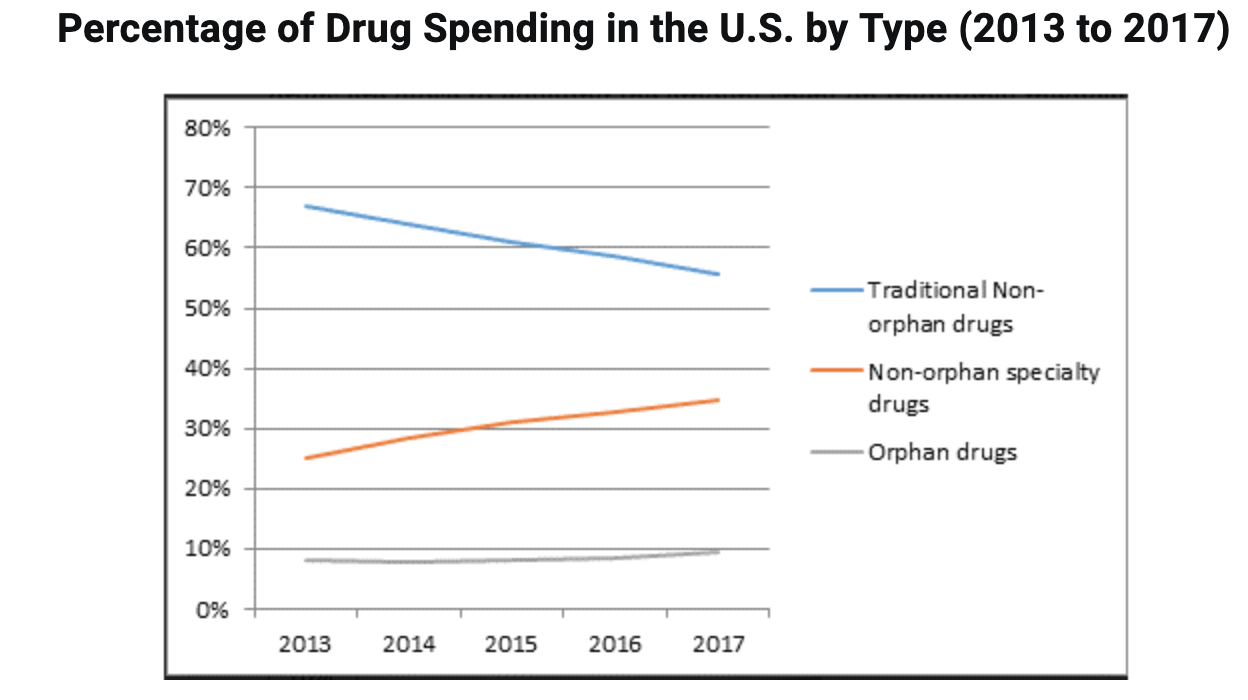Article
Specialty Pharmacy By the Numbers
Author(s):
As specialty pharmacies continue to grow, health systems will need to evaluate whether an integrated specialty pharmacy is right for them.
This article was originally published by Acentrus.
Specialty pharmacy is growing rapidly and becoming a significant consideration for health systems and manufacturers across the United States. This is due to changing trends in drug manufacturing and the increasing importance of adherence and data reporting as more health systems are investigating integrated ambulatory specialty pharmacies.
For the last 10 years, manufacturers have become more focused on creating specialty medications for chronic and complex disease states. Often, the populations for these disease states are small, and industry and regulatory trends have been driving this shift.
Specialty Pharmacy Growth
The number and cost of specialty pharmaceuticals continue to draw the attention of the health care community as providers, payers, and patients work to assess and manage the expense of these medications. This trend is not expected to change, especially given the metrics related to this practice category.
In the second half of 2018, the FDA approved 21 additional new molecular entities. Of those products, 12 (57%) are considered specialty pharmaceuticals based upon such factors as the indication and intended population of use, administrative and monitoring considerations, cost, and/or limited distribution processes.
Over the last five years, total US expenditures for specialty drugs have doubled from $83 billion in 2013 to $157 billion in 2017. Including the expense for orphan drugs (ie, "ultra-specialty" medications), total spending on specialty drugs reached $200 billion in 2017. Combined, the categories of specialty pharmaceuticals and orphan drugs are close to equaling the amount spent on traditional medications in the United States.

Source: Orphan Drugs in the United States, Growth Trends in Rare Disease Treatments, October 2018. IQVIA Institute.https://www.iqvia.com/institute/reports/orphan-drugs-in-the-united-states-growth-trends-in-rare-disease-treatments, accessed October 27, 2018.
Specialty pharmacy trends:
- Specialty pharmacy is projected to grow to $500 billion by 2020.
- Specialty medication is expected to increase to 50% of drug costs by 2020.
- 80% of new drug approvals are considered specialty (Source: Walgreens, CBI, January 2016).
- Specialty drugs currently represent just under 2% of the prescriptions, but nearly 40% of spending in the same channels.
Why the Steep Increase?
Drug manufacturers aren’t producing specialty medications without a good reason. Demand has been steadily rising for specialty medications that treats specific disease states. Drug manufacturers are also being asked to create more specialty drugs that treat smaller sections of the population.
Treatments for many common and acute disease states have been the primary focus of manufacturers for a long time, creating an increased demand for medications to treat chronic disease states with small populations. Historically, because specialty medications impact such small markets, it was hard to even reach a proper sample size in testing for FDA regulations.
Specialty drugs are often incentivized through the Orphan Drug Act of 1984, helping to increase profitability through tax benefits and market exclusivity agreements. This has allowed manufacturers to dedicate more resources to research and development for diseases that impact a much smaller portion of the population.
These regulations also allow manufacturers to test with fewer patients in human trials. Since these diseases are chronic, rare, or complex, the drugs require more education and care, creating the current adherence problem facing pharmaceuticals.
The benefit of working on specialty drugs that are more personalized and precise is that they allow the medication to reach an effective state faster and reduce adverse effects and reactions. These outcomes also benefit health systems through the reduction in risk associated with a given medication.
The growth of specialty pharmacy is directly related to the growth of specialty and limited distribution medications. More health systems will begin to adopt integrated specialty pharmacies to better manage their patient care and increase adherence rates.
Specialty Pharmacy Impact on Patients
More health systems are integrating specialty pharmacies to facilitate collaboration between a holistic care team consisting of pharmacists and physicians. A health system specialty pharmacy provides greater control over the clinical outcomes for patients due to continuous care provided by pharmacists and physicians working side by side.
In fact, according to the Tracking the Future of Specialty Pharmacy 2018 Report by CSI Health Group, 58% of health system specialty pharmacies cited continuity, comprehensiveness and coordination of care, and speed to therapy as the main benefits.
The increased exposure and coordination lead to better management of adverse effects and adherence. Patients who exclusively use specialty pharmacies had a 60% higher likelihood of achieving optimum adherence compared with retail pharmacy users.
Health system specialty pharmacies are driving better care for patients, leading to better outcomes, and meeting the needs of the market shift to a value-based reimbursement model.
Conclusion
In summary, specialty pharmacy is going to continue to grow at rapid rates due to several factors:
- An increased focus on the creation of specialty and limited distribution drugs.
- An increase in health system-based specialty pharmacies that are better equipped to provide continuous care between physician and pharmacist.
- The continued rise in personalized medications for complex and rare disease states.
Practitioners and health systems will need to adapt so they can provide a better care experience for their patients, while also meeting the requirements for their value-based reimbursements.
As specialty pharmacies continue to grow, health systems will need to evaluate whether an integrated specialty pharmacy is right for them. Those that take steps to implement a specialty pharmacy will see higher adherence rates, an easier to manage reimbursement system, and possibly a reduction in risks.
ABOUT THE AUTHOR
As a Senior Director of Specialty Pharmacy, Pedram Pahlavan develops, implements, and maintains a health system-centric specialty pharmacy solutions.






